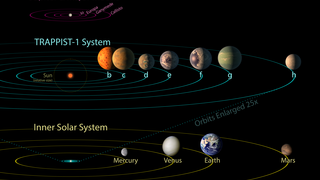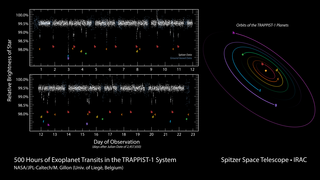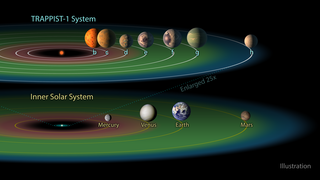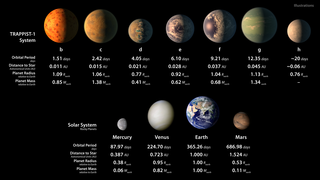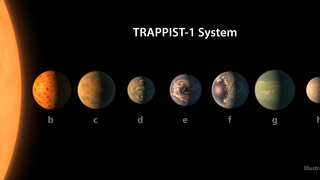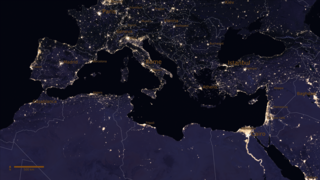Planets and Moons
Universe
ID: 30867
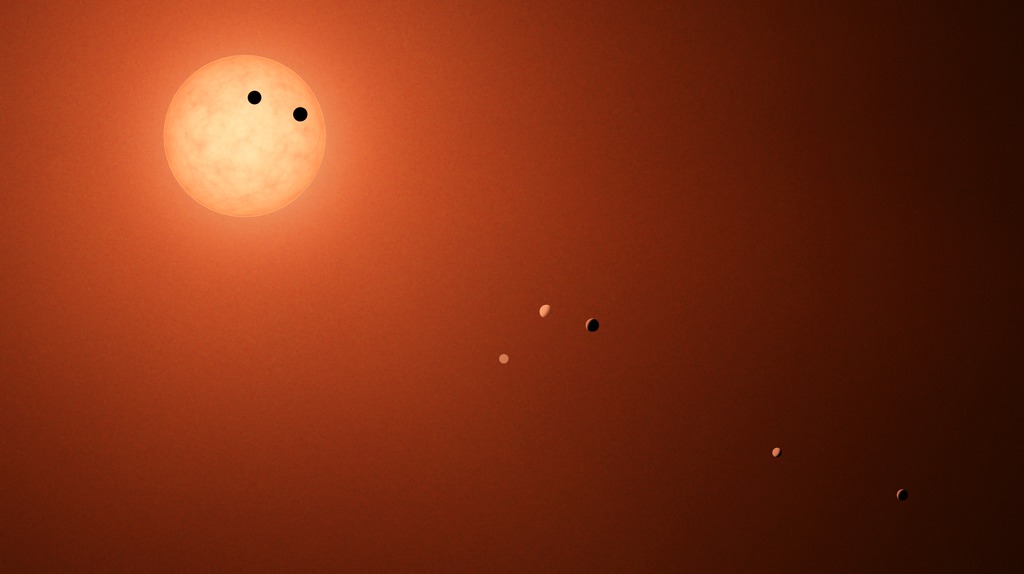
This illustration shows the seven TRAPPIST-1 planets as they might look as viewed from Earth using a fictional, incredibly powerful telescope. The sizes and relative positions are correctly to scale: This is such a tiny planetary system that its sun, TRAPPIST-1, is not much bigger than our planet Jupiter, and all the planets are very close to the size of Earth. Their orbits all fall well within what, in our solar system, would be the orbital distance of our innermost planet, Mercury. With such small orbits, the TRAPPIST-1 planets complete a “year” in a matter of a few Earth days: 1.5 for the innermost planet, TRAPPIST-1b, and 20 for the outermost, TRAPPIST-1h.
This particular arrangement of planets with a double-transit reflect an actual configuration of the system during the 21 days of observations made by NASA’s Spitzer Space Telescope in late 2016.
The system has been revealed through observations from NASA's Spitzer Space Telescope and the ground-based TRAPPIST (TRAnsiting Planets and PlanetesImals Small Telescope) telescope, as well as other ground-based observatories. The system was named for the TRAPPIST telescope.
TRAPPIST-1 Exoplanets Illustration

This particular arrangement of planets with a double-transit reflect an actual configuration of the system during the 21 days of observations made by NASA’s Spitzer Space Telescope in late 2016.
The system has been revealed through observations from NASA's Spitzer Space Telescope and the ground-based TRAPPIST (TRAnsiting Planets and PlanetesImals Small Telescope) telescope, as well as other ground-based observatories. The system was named for the TRAPPIST telescope.
Related
For More Information
Credits
Amy Moran (Global Science and Technology, Inc.): Lead Technical Support
Robert Hurt (IPAC): Data Visualizer
Robert Hurt (IPAC): Data Visualizer
Please give credit for this item to:
NASA/JPL-Caltech/R. Hurt (IPAC)
NASA/JPL-Caltech/R. Hurt (IPAC)
Short URL to share this page:
https://svs.gsfc.nasa.gov/30867
Keywords:
SVS >> Hyperwall
NASA Science >> Planets and Moons
NASA Science >> Universe
https://svs.gsfc.nasa.gov/30867
Keywords:
SVS >> Hyperwall
NASA Science >> Planets and Moons
NASA Science >> Universe
